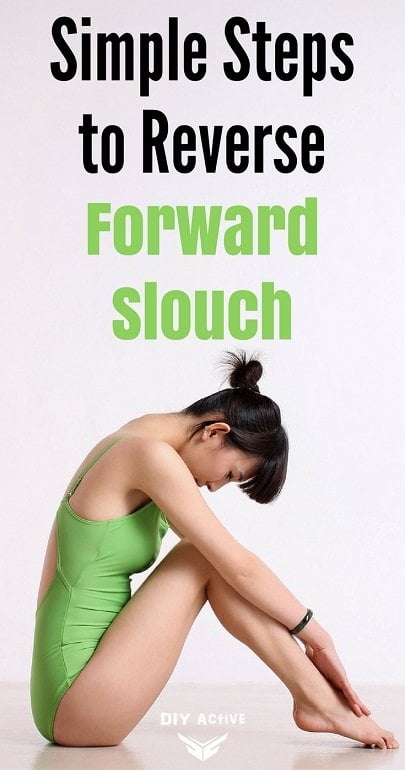Reverse the Forward Slouch
Ready to reverse the forward slouch? Think it will be hard? Joan Pagano stopped by to give us some amazing, can’t miss tips about how to actually reverse the forward slouch and improve your posture in no time!
Your posture speaks louder than words
“A slouching posture tends to suggest a certain laziness of character…whereas an upright posture can confirm a sense of self-possession,” according to Count Rostov in A Gentleman in Moscow by Amor Towles.
As you sit reading this, what is the shape of your spine?
Are you hunched over your computer, leaning on your desk, or slumped back in a chair?
Daily postures can sabotage proper spinal alignment, but a few easy moves help reinforce the natural curves of the spine, improving both your normal posture and your form in weight training exercises.
In neutral alignment four natural curves create a functional balance:
- two slight inward curves of the neck and low back
- two slight outward curves of the mid-back and sacrum
They help counteract the constant force of gravity on the body, ensure that your joints work efficiently and enhance your body mechanics in all positions – sitting, standing, and moving.
However, when any of these curves become exaggerated it can cause strain in the joints, ultimately leading to headaches, neck and shoulder problems, sciatica, and hip and knee pain.

Good and poor posture are both habits that develop from repeated movement patterns. To re-train your spinal curves, get in the habit of doing these four simple exercises.
You can even do them sitting at your desk. Repeat each move 5-10 times daily.
Lengthen the spine:
To restore and maintain the normal curves of the spine, try this “growing exercise.”
- Take a deep breath, filling the belly with air, and gradually lengthen the spine as you lift the top of your head to the ceiling
- Think of elongating through the torso, stretching the space between the ribs and the hips, decompressing the spine
- Fluff up the chest by drawing the air up into the chest cavity
- As you exhale, hold the height and stay tall
Realign the head:
It is common to develop a forward head position from our daily activities. The “neck press” strengthens the muscles of the neck and upper back and realigns the head over the shoulders.
- Put two fingers on your chin. Inhale, then as you exhale use your fingers as a cue to retract your chin, i.e. move it straight back, pressing the curve out of the back of your neck
- Keep your chin level being careful not to push it down
- Release and repeat
Anchor the shoulder blades:
When you’re in the habit of slouching, your shoulder blades slide forward and apart exaggerating the curve of the mid-back. “W’s” activate the muscles that stabilize your shoulder blades, an extremely important technique to use when doing upper bodyweight training.
- Hold your arms out to the sides, palms forward, with the elbows bent and in line with the shoulders
- To form a “W”, inhale, then squeeze the shoulder blades down and together as you let your breath out slowly
- Hold for 2-3 seconds and repeat
Align the pelvis:
The position of the pelvis determines the degree of curve in the lumbar spine. Neutral spine alignment is midway between a full arch and a flat back position.
- Explore your personal range of motion by tilting your pelvis forward and back
- Return to a neutral position, allowing the slight curve in the low back area – just enough to slip your hand in if you are lying on your back or standing straight with your back against the wall
- Tighten your abdominals to hold this position
Wrap-Up
Improving posture requires a conscious effort and begins with developing the mental awareness of how to hold the natural curves of the spine.
As a result, you will not only avoid pain and strain but…
You’ll also project a proud, confident personality, or in Count Rostov’s words “confirm a sense of self-possession.”
- How to Lose Belly Fat - December 4, 2023
- Dangerous Curves: Simple Steps to Reverse the Forward Slouch - May 11, 2020
- 10 Easy At-Home Workout Tips Every Day - January 24, 2017